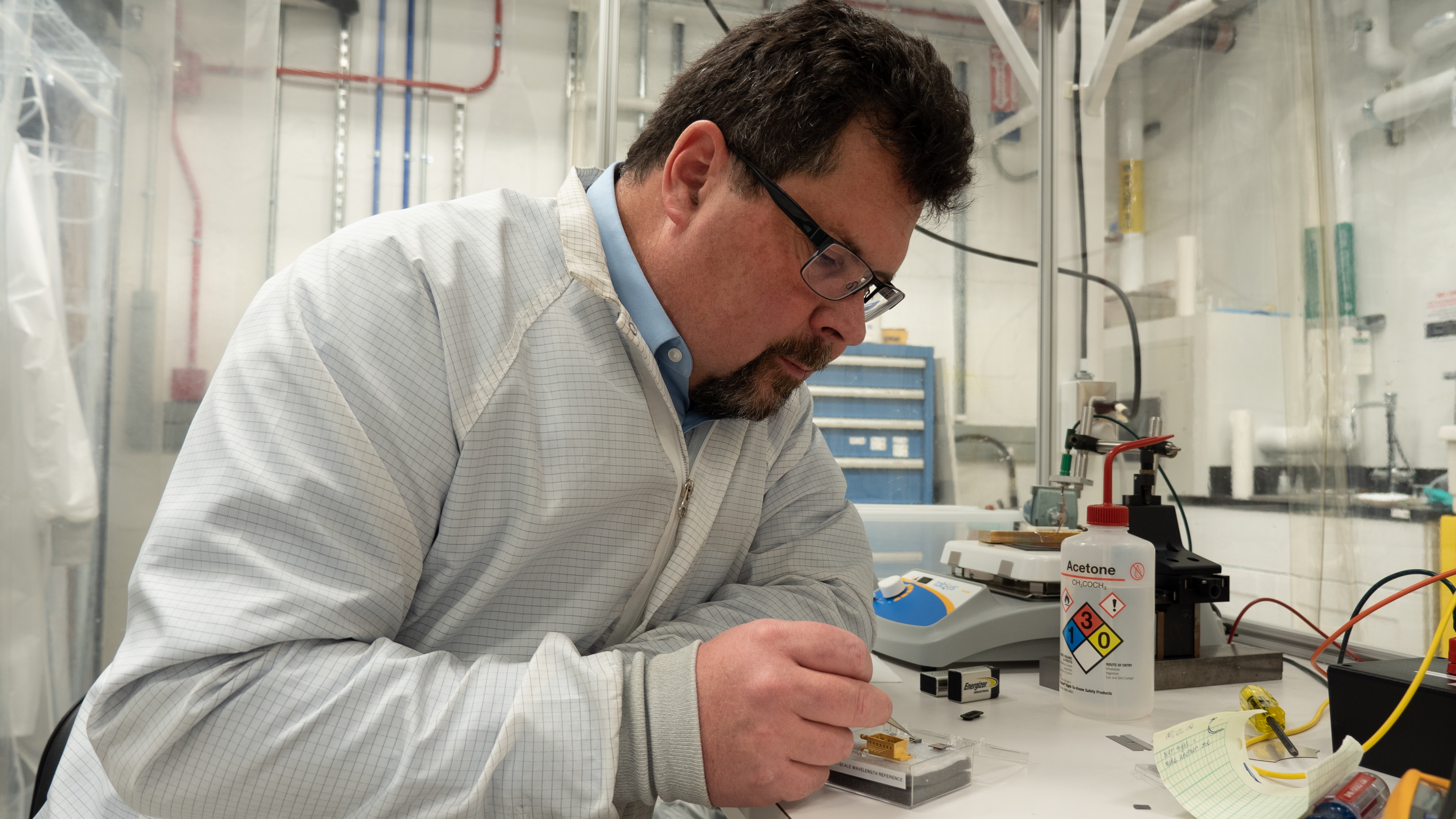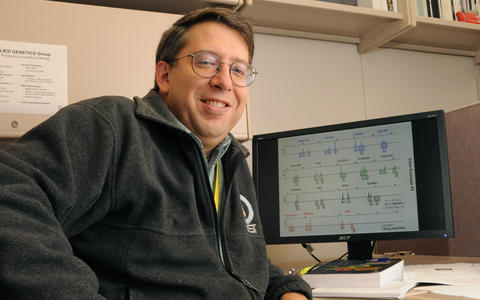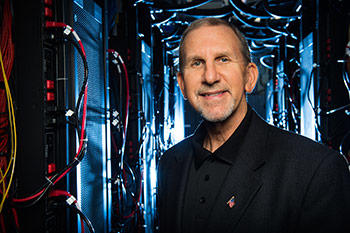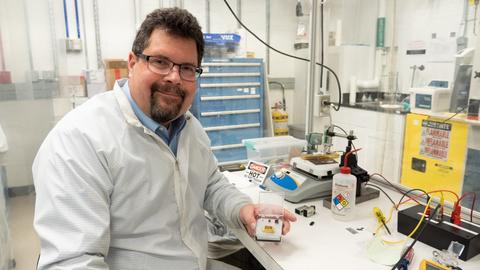Taking Measure
Just a Standard Blog
NIST’s Researchers Look Ahead to High-Tech Trends in 2023 and Beyond

As 2022 draws to a close, we asked NIST’s senior researchers to look ahead to the new year and beyond. They research topics that impact all of us, from indoor air quality to cybersecurity.
We asked our fellows, “How will the technology you are working on today affect society in the years to come?” Here are their thoughts and predictions.
AI Will Become Even More Common, but Risks Remain — Ellen Voorhees

Artificial intelligence (AI) tools that can write and talk like people are getting a lot of attention right now. You can ask one of these tools for something, and it gives you a response in perfectly fluent English.
There are many challenges with this technology. One is that the AI itself has no idea what it wrote or if the material it wrote is accurate. The answers could be true, or they could be completely ridiculous.
If it sounds accurate, people may not realize that the AI-generated information could be false. AI tools can create massive amounts of content that is wrong or misleading, and it’s a huge concern, especially if it’s done intentionally.
NIST is working to help mitigate these risks with trustworthy AI, and it’s one of my areas of focus. Whether it’s a voice assistant or a chatbot, you want to make sure you are developing a system that is responsible and accurate. The user needs to be able to trust the results or the answers.
We’re developing a risk management framework to help technology companies understand what might go wrong in the AI creation process. We’re not a regulatory agency, but we’re helping them think through the ramifications of AI and how they can create the most responsible, helpful products.
Learn more:
- Artificial Intelligence Research at NIST
- Seek and You Will (Probably) Find: Helping Mine COVID-19 Research Data
- Teaching Computers to Read ‘Industry Lingo’ — Technical vs. Natural Language Processing
Forensic Science Reviews Will Advance Criminal Justice Efforts — John Butler

This field plays a crucial role in our criminal justice system. Forensics can be vital to solving cases, including those that have long gone cold. Science can even exonerate those who have been wrongfully convicted.
Because of the important role forensic science plays in our society, we are assessing forensic science’s past to strengthen its future. We do this by examining published literature and data on forensic science methods and practices, known as scientific foundation reviews. We are working on a series of important studies of forensic science. Our first four studies are on:
- evidence containing DNA from several people, known as DNA mixture interpretation;
- digital investigation techniques;
- bitemark analysis; and
- firearm examination.
These scientific foundation reviews will be useful in several ways. First, they can help establish trust in methods that rest on solid scientific foundations when properly applied. Second, they can help forensic practitioners, investigators, courts and others understand the capabilities and limitations of forensic methods to ensure they are used appropriately. Third, by identifying knowledge gaps, these reviews can help provide strategic direction for future research. That research will further this critical science that our justice system relies on to ensure accuracy and fairness.
Learn more:
Designing for Security Will Keep Everything From Your Smart TV to Your Car Safer From Cyberthreats — Ron Ross

Security and privacy can no longer be an afterthought when designing new devices and systems. That’s why NIST recently published a comprehensive set of design principles that can be used to develop more trustworthy and secure systems that can withstand modern cyberthreats.
These systems can help protect every aspect of society from the electric grid to medical devices. It’s critical that security and privacy be built into the design of systems, rather than added on later.
We are now immersed in the digital age with a complete dependence on complex computing technology. Powerful computers and sensors are now embedded into the things we rely on, like TVs, cars, home appliances and more. It’s called cyber-physical systems convergence, and it compounds the need for security and privacy to be at the center of a system design. NIST’s set of security engineering design principles can be used to “build it right” from the start, helping to keep our devices and vital technology safe and operational.
Learn more:
Measurement Science of Indoor Air Quality Can Help Protect Us From COVID-19 and Other Respiratory Illnesses — Andrew Persily

For the last two and a half years, I have been applying my knowledge of building ventilation and indoor air quality (IAQ) to the COVID-19 pandemic. By improving ventilation and other aspects of IAQ, we can reduce people’s exposure to infectious aerosols and their risk of contracting COVID-19 and other respiratory illnesses.
The pandemic is not the only reason to focus on IAQ. Technologies that improve ventilation and IAQ can also offer significant health, comfort and productivity benefits to people in buildings. If implemented wisely, they can also increase building energy efficiency, which is key to addressing greenhouse gas emissions from buildings.
I have been studying ventilation and IAQ since my arrival at NIST in 1982, though the pandemic has led to public attention on this field I have never seen before.
My research aims to help ensure that ventilation systems are operating as intended and consistent with industry standards. There are plenty of high-tech solutions, such as sophisticated ventilation system controls, IAQ sensors and air cleaning technologies. But many buildings first need to get their systems operating as intended before trying new technology. Too many buildings too often suffer from inadequate maintenance that leads to poor performance in IAQ and energy efficiency. Whenever I see a new technology, I ask: Who is going to maintain it when we don’t maintain the old stuff?
My 2023 efforts will continue work that I have pursued for decades: using indoor carbon dioxide concentrations to evaluate building ventilation. Indoor carbon dioxide can be a useful indicator of ventilation. However, widespread confusion remains on how to interpret indoor carbon dioxide concentrations. While many recommend monitoring indoor carbon dioxide and suggest target levels, these recommendations ignore important differences between spaces, the timing of measurements relative to occupancy, and the technical basis for interpreting these measurements. I am working on simulation studies, software tools, standards and guidance, while also writing papers and speaking at events to help people understand what carbon dioxide will and won’t tell you.
Learn more:
- Indoor Air Quality Research at NIST
- NIST’s Indoor CO2 Tool Can Help Assess Ventilation and Indoor Air Quality
Spintronics Will Lead to Smaller, More Powerful Electronic Devices — Jeffrey W. Lynn

The price of everything is always increasing — certainly with inflation at its current level. One major exception over the last few decades has been electronics. Everyone expects their next computer or smartphone to be faster and stay charged for longer while costing the same amount of money as before.
One essential aspect that has made this miracle possible is the constant discovery of new materials and techniques that enable more electronic devices (now in the billions) to be packed onto a chip. But they haven’t yet fundamentally solved a big problem.
Moving electric charge through all these tightly packed spaces makes our devices hotter, causing them to limit their speed or even fail. If we’re going to continue to have more powerful and inexpensive electronics, we need to explore other possibilities to make these devices work.
Our research program is measuring the properties of new quantum materials that could solve this problem. We’re particularly interested in one approach, known as spintronics, which uses the magnetic properties of the electrons in a device instead of their electric charge to perform tasks such as processing information. This could drastically reduce the amount of heat generated in each device, potentially leading to higher performance and much longer battery life for future devices.
Learn more:
- Spintronics for Neuromorphic Computing
- New Research Center to Explore Spintronics Materials for Advanced Computing
Calibrating Measurements Will Make Sure You Get What You Pay For — John Kitching

Have you ever wondered while pumping gas whether the 10 gallons you are paying for is really 10 gallons? It says so on the gas pump, but how is that measured? How do you know it is correct?
The answer is that every year, someone goes out to every gas pump and calibrates it, ensuring that the pump is indeed putting out an exact gallon. In fact, everything from grocery store scales to the lasers used in eye surgery needs to be periodically calibrated and tested to ensure fair trade and safe operation.
So now imagine a world where every measurement instrument was automatically calibrated for its entire measurement lifetime. Billions of dollars would potentially be saved each year by alleviating the need for in-person calibrations.
At NIST, we are developing small, low-cost chips that provide a stand-alone connection between some quantity to be measured (length, time, voltage, etc.) and the international definitions for basic physical quantities. Using techniques used to make integrated circuits, these devices could potentially be made inexpensively and used widely.
While challenges remain, NIST on a Chip is slowly becoming reality and promises significant direct impact on real-world problems.
Learn more:





AI is a great tool, however you must use many different methods when doing research. AI does have its benefits though, especially when it comes to the speed in which you can receive content.
- Daniel